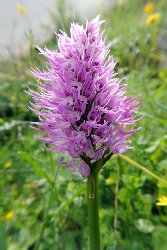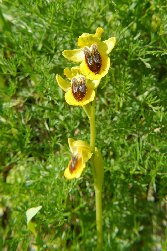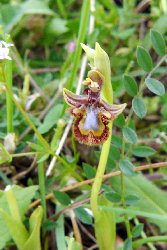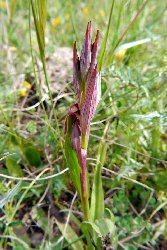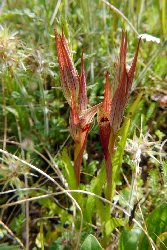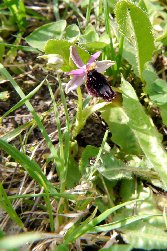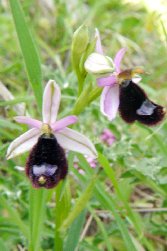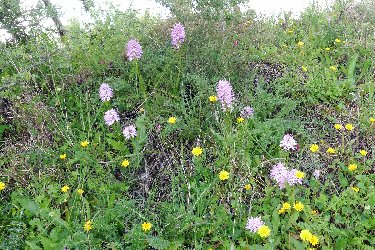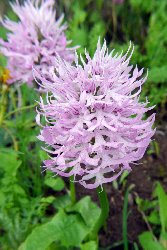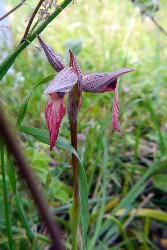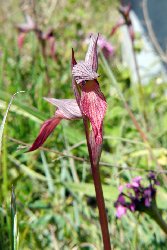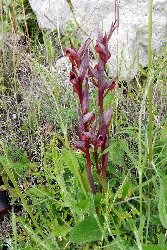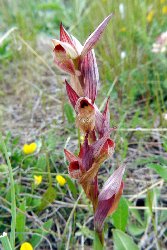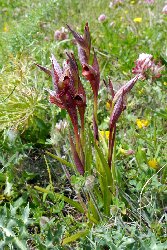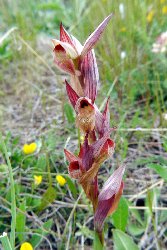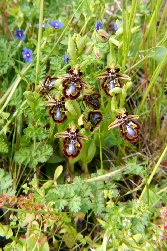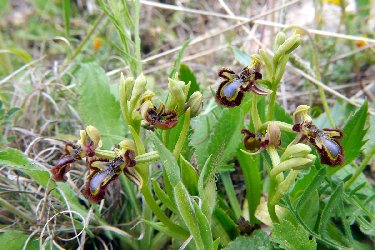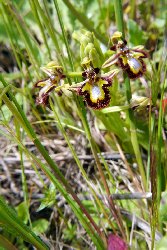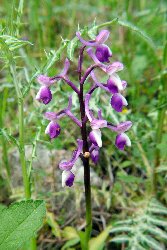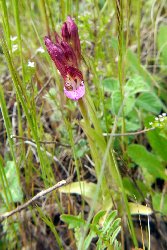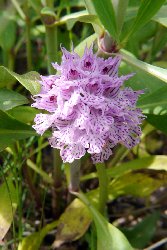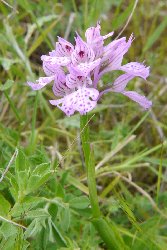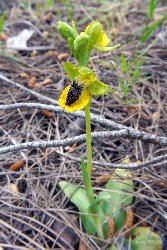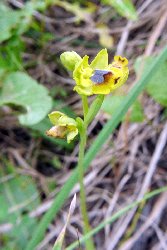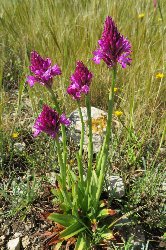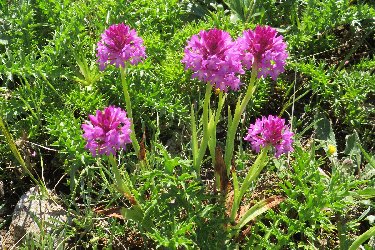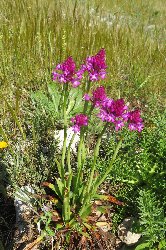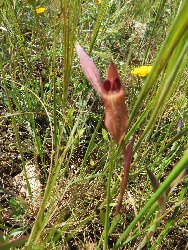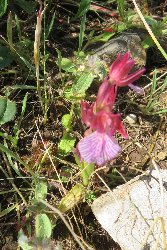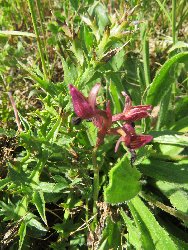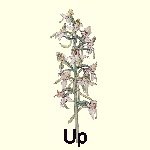|
|
||||||||
|
|
||||||||
 |
|
We didn't get as much done as we would have liked this day. Firstly a patently incorrect (in hindsight) sent us down into the town of Vizinni, where we tried each and every road out of the central square only to find it was not the road we wanted. Turning around or reversing on some of the streets was a real nightmare as cars swooped past from nowhere. None of the locals looked like they spoke Italian, yet alone English - there is a distinct Sicilian dialect - but at last a man not wearing peasant costume managed to tell us we needed the road that we had come in by. And later in the day we planned on looking along the shoreline of Lake Santa Rosalia which reputedly had a good orchid flora. We found the lake, but each track leading to it was worse than the dead end we had tried before. Too much time lost. Solarino to Sortino (37° 6'58.27"N 15° 7'21.12"E) The first chance to pull over and look for orchids was just outside Solarino. Not the most exciting of orchid sites with nothing new found.
North of Sortino (37°13'6.00"N 15° 2'13.64"E) I had planned a circular trip in the hills north of Sortino, but somewhere we must have took a wrong turning. The road got worse and worse, cows wandered freely and we came to locked gates across it. Still we did find one spot, with a few orchids, and what seems to be Ophrys bertolonii ssp. explanata*. Typically it was the other side of a barbed wire fence, but a few photos were possible of the small colony
Sortino to Bucheiri (37° 9'15.60"N 14°58'38.56"E) We had been along this road twice previously, but in the other direction. This time there was need of some bushes out of sight of passing traffic, and luckily there are stile gates into some managed woodland. We had been to one such place nearby where tourists were welcomed in the main season, but the gates were locked for cars. There we saw no orchids, but this similar spot abounded in them - if you totaled the woodland, the roadside and field opposite as a single site that is.
Not much to write about for the rest of the day. The abortive trip to the lake wasted so much time, plus we needed a stop during quite an intense thunderstorm. On the drive back from Fiarratana to Palazzolo Acreide there were frequent pink flashes of Orchis italica, but nothing else. We did another stop at the Hillock, but our findings are rolled up into the original piece. The the hire car went back. Siracusa 13th April 2019 (37° 5'32.14"N 15°17'54.69"E) The railway station in Siracusa is now a terminus, but not so long ago the rials continued through the town and uphill along The Arsenal much as a tramway I would imagine. At the top it took a route between the city and the clifftops. This part is now a popular footpath and cysleway. The were some great views to be had providing you weren't orchid obsessed, for there were none of these ...... until I glimpsed something bright pink in the rough ground to the side. These turned out to be Anacamptis pyramidalis, looking very much like our flowers(except they were posiyively glowing in the bright sunshine). A further search reveals A. papillionacea and Serapsias orientalis. Unfortunately, not expecting orchids, I was under equipped in the camera department. There were other flowers already going over, but the only species possible was A. papilionacea, but other examples were only just opening. These may remain a mystery species.
|
|
|
|
|
